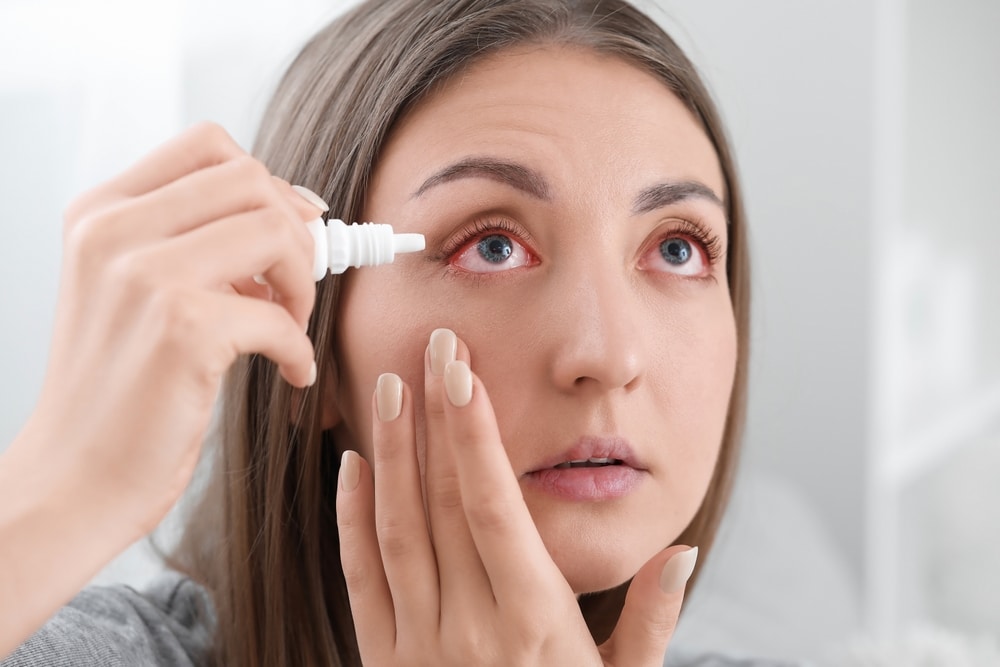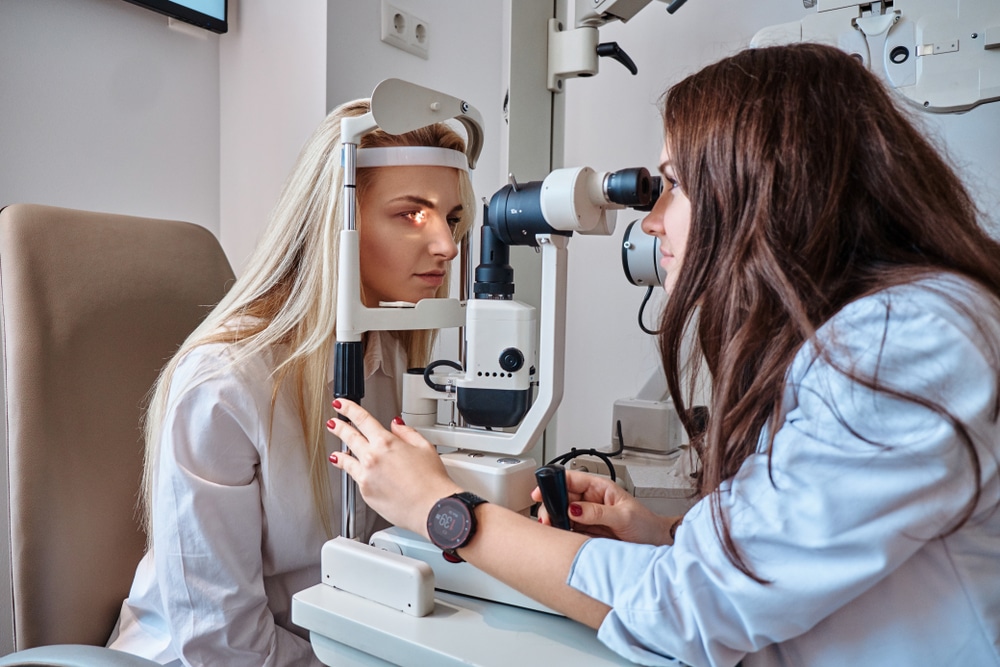
When your eyes feel irritated, itchy, or uncomfortable, you might wonder whether you’re dealing with dry eye syndrome or seasonal allergies. Both conditions share overlapping symptoms, which can make self-diagnosis confusing.
There are a few key differences between these two common eye problems that help you seek the right treatment and find relief faster.
Dry Eye Syndrome vs. Allergies
The root causes of these conditions are fundamentally different. Dry eye results from insufficient tear production or poor tear quality, while allergies involve your immune system reacting to environmental particles like pollen or pet dander.
Dry Eye Syndrome
Dry eye syndrome occurs when your eyes don’t produce enough tears or when the tears evaporate too quickly. There are two main categories of dry eye disease: aqueous tear deficiency, which involves low tear production, and meibomian gland dysfunction (MGD), which causes tears to evaporate too rapidly due to insufficient oil in the tear film.
A large percentage of patients with dry eyes have MGD. Meibomian glands line the edges of your eyelids and produce the oil layer that prevents tear evaporation.
When these glands become blocked or dysfunctional, your tear film becomes unstable, leading to dry eye symptoms. MGD also increases your risk of developing chalazia, which are bumps that form on the eyelid.
Multiple factors contribute to dry eye development. Eye strain from prolonged screen time, contact lens wear, certain medications, hormonal changes, and underlying conditions like rheumatoid arthritis or Sjogren’s syndrome can all trigger or worsen dry eye symptoms.
Eye Allergies
Eye allergies, also called allergic conjunctivitis, occur when your immune system overreacts to substances in the environment. Common allergens include pollen, pet dander, dust mites, and mold spores.
When these particles contact your eye’s surface, your body releases histamine and other chemicals that cause inflammation and discomfort. Unlike dry eye, which stems from tear production or quality issues, allergies trigger an immune response.
This fundamental difference affects both the symptoms you experience and the treatments that will help.
Key Symptoms That Distinguish Dry Eye from Allergies

While both conditions can cause redness and discomfort, certain symptoms help differentiate them.
Dry eye syndrome typically causes persistent dryness or a gritty, sandy sensation in your eyes. You might experience a burning feeling, fluctuating or blurred vision, and paradoxically, watery eyes as your tear glands overcompensate for the dryness.
Light sensitivity is common, and your eyes may feel heavy or fatigued, especially after reading or screen use. Contact lens wear often becomes uncomfortable or intolerable.
Eye allergies produce intense itching as the hallmark symptom. This itching tends to be more severe than what dry eye patients experience.
Allergies also cause significant eye swelling and puffiness, particularly around the eyelids. You’ll likely notice that both eyes are affected equally, and symptoms often coincide with nasal congestion, sneezing, or a runny nose.
The whites of your eyes may appear pink or bloodshot, and you might see stringy mucus discharge.
Timing and Pattern Differences
The timing of your symptoms provides valuable diagnostic clues. Dry eye symptoms tend to worsen throughout the day, especially after activities that reduce your blink rate, such as computer work, reading, or driving.
Symptoms may improve after you rest your eyes or wake up in the morning, though some patients experience morning dryness as well.
Allergy symptoms follow seasonal or environmental patterns. If your discomfort intensifies during spring or fall, corresponds with high pollen counts, or worsens when you’re around pets or in dusty environments, allergies are the likely culprit.
Allergy symptoms can appear suddenly when you’re exposed to triggers and may improve quickly when you move to a different environment.
Are Allergies Treated Differently Than Dry Eye?
Treatment differs significantly between these conditions because the underlying problems are distinct.
For dry eye syndrome, treatment options range from artificial tears and prescription medications like Restasis or Xiidra for mild cases to advanced procedures for more severe or persistent cases. At Kirk Eye Center, our dry eye doctors offer LipiFlow, a treatment that uses controlled heat and gentle massage to unclog blocked meibomian glands in a 13-minute procedure.
Other options include punctal plugs that reduce tear drainage, BlephEx to clear eyelid inflammation, and various eyelid hygiene treatments, including Avenova, tea tree oil, lid scrubs, and heated eye masks.
Allergy treatment focuses on reducing the immune response and inflammation. Mast cell stabilizer drops prevent the release of histamine and work best when used before allergen exposure.
Cold compresses and artificial tears help flush allergens from the eye surface and reduce discomfort. For severe allergies, oral antihistamines or allergy immunotherapy may be recommended.
Why It’s Important to See Your Eye Doctor for a Professional Diagnosis

Self-diagnosis and treatment can delay proper care and allow symptoms to worsen. Although dry eye syndrome rarely causes permanent corneal damage, untreated cases can lead to corneal abrasions, corneal ulcers, or an increased risk of eye infections. These complications can affect vision and require more intensive treatment.
Similarly, chronic eye allergies that go untreated can lead to persistent inflammation and reduced quality of life. Some patients develop secondary infections when they rub their eyes excessively due to allergy-related itching.
Getting a professional evaluation ensures you receive targeted treatment that addresses the actual problem rather than just masking symptoms temporarily.
When to Schedule an Appointment
If you’ve been managing eye discomfort with over-the-counter remedies without lasting improvement, or if your symptoms interfere with daily activities like reading, working, or driving, schedule an evaluation. Persistent symptoms that last more than a few days, worsening vision, significant pain, or discharge that’s yellow or green all warrant prompt professional attention.
Whether your eye discomfort stems from dry eye syndrome, allergies, or both, accurate diagnosis is the foundation of effective treatment. With the right diagnosis and treatment approach, most patients experience significant improvement in comfort and visual function.
Schedule an appointment at Kirk Eye Center in one of our convenient Chicagoland locations. Our team will identify the source of your symptoms and develop a treatment plan that provides lasting relief, helping you return to comfortable, clear vision.

